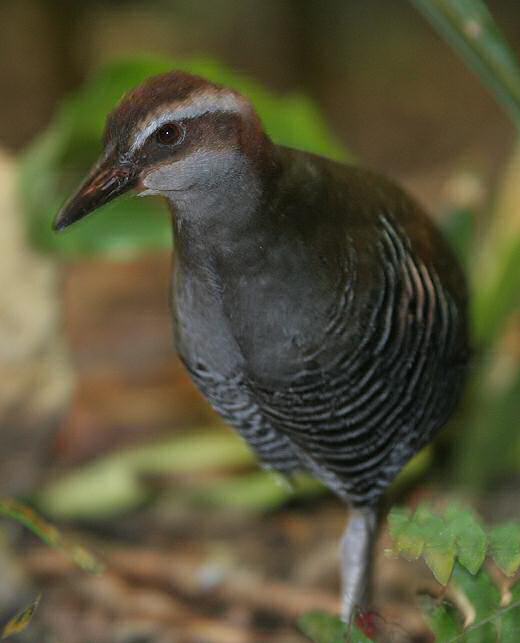
Gallirallus owstoni
SUBFAMILY
Rallinae
TAXONOMY
Hypotaenidia owstoni Rothschild, 1895, Guam. Monotypic.
OTHER COMMON NAMES
French: Rвle de Guam; German: Guamralle; Spanish: Rascуn
de Guam.
PHYSICAL CHARACTERISTICS
11 in (28 cm); 6–10.7 oz (170–303 g). Nearly flightless. Upperparts
olive-brown; foreneck to breast gray; underparts and
remiges barred black and white. Juvenile has less gray; chick
covered with black down.
DISTRIBUTION
Formerly on Guam, Mariana Island. Reintroduced to Rota,
northern Mariana Island, and Guam.
HABITAT
Forest, woodland, scrub, grassland, and agriculture.
BEHAVIOR
Territorial; secretive and wary.
FEEDING ECOLOGY AND DIET
Opportunistic and omnivorous, taking mollusks, insects,
geckos, seeds, fish, and carrion. Often forages at edges of fields
and roads.
REPRODUCTIVE BIOLOGY
Monogamous. Breeds all year. Nest a cup of grass, on dry
ground in dense grass; eggs one to four (usually three to four);
white to pinkish in color with small spots of pink or blue concentrated
at the large end. Incubation 19 days; young sexually
mature at 16 weeks.
CONSERVATION STATUS
Formerly abundant throughout Guam, despite being hunted;
1960s population estimated at 80,000. After 1968 it declined
rapidly due to predation by the accidentally introduced brown
tree snake (Boiga irregularis), and by 1987 it was Extinct in the
Wild. It survives in captive-breeding facilities on Guam and at
14 zoos in the United States (about 180 birds in 1999). From
1987 birds were introduced to the snake-free island of Rota,
where they bred from 1999. It was reintroduced to Guam in
1998, into a protected area.
SIGNIFICANCE TO HUMANS
None known.
Photo Gallery of - Guam rail
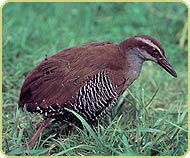
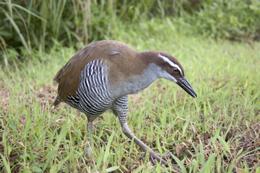
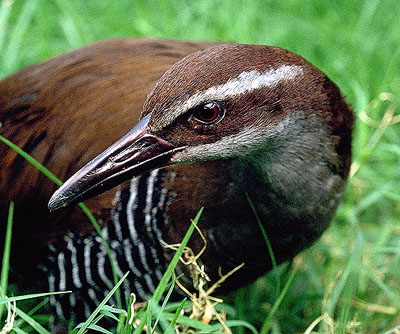
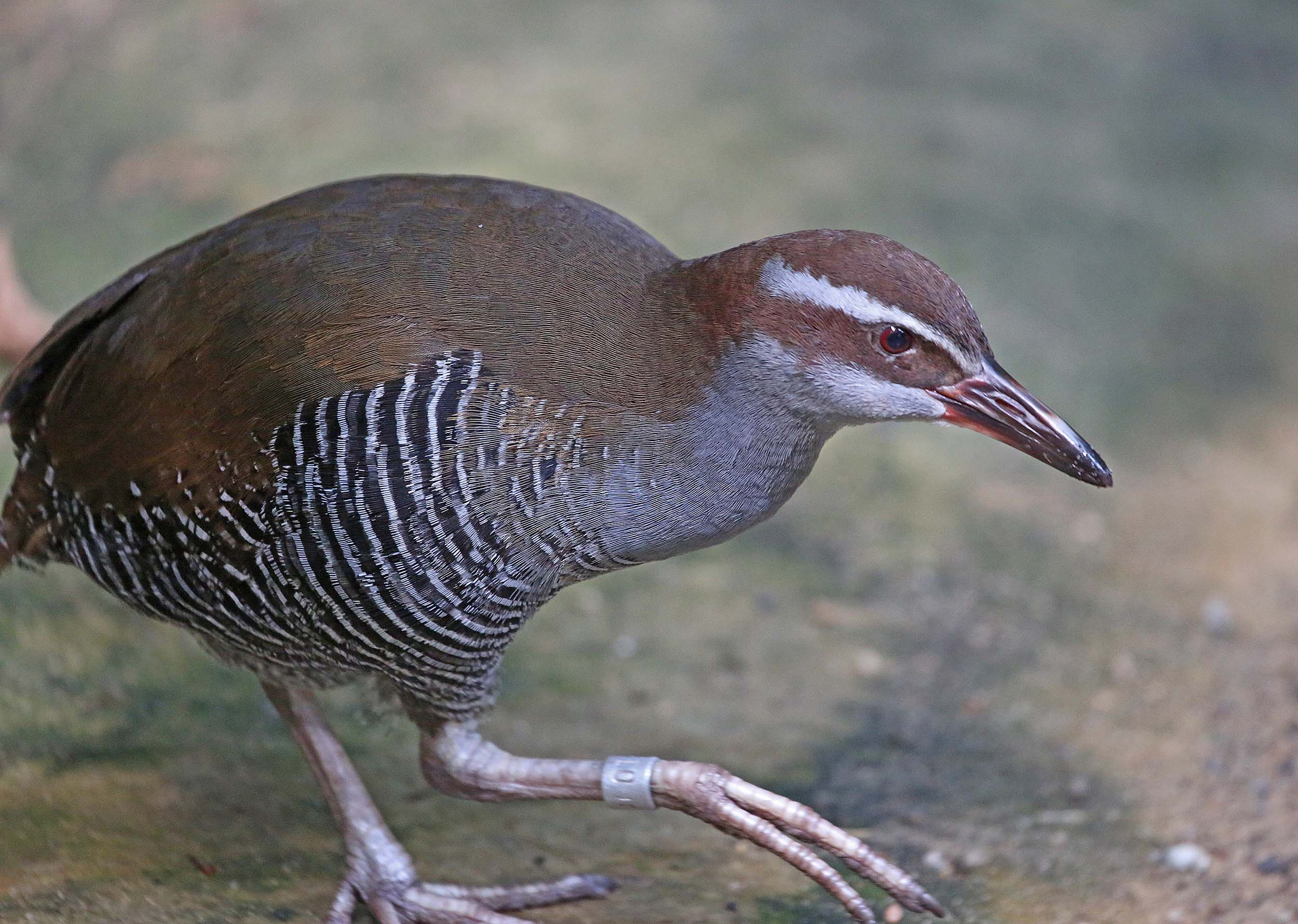
 Animalia Life
Animalia Life